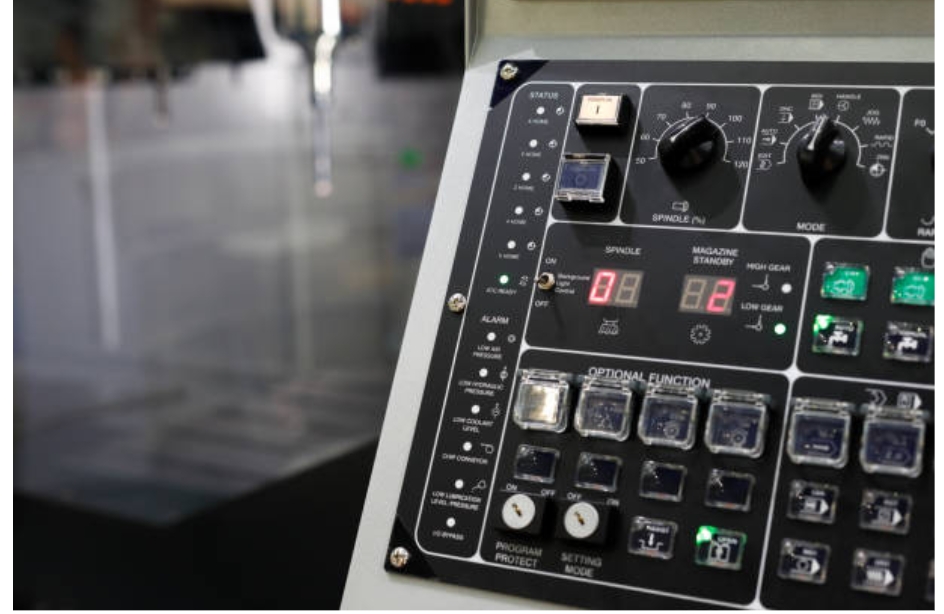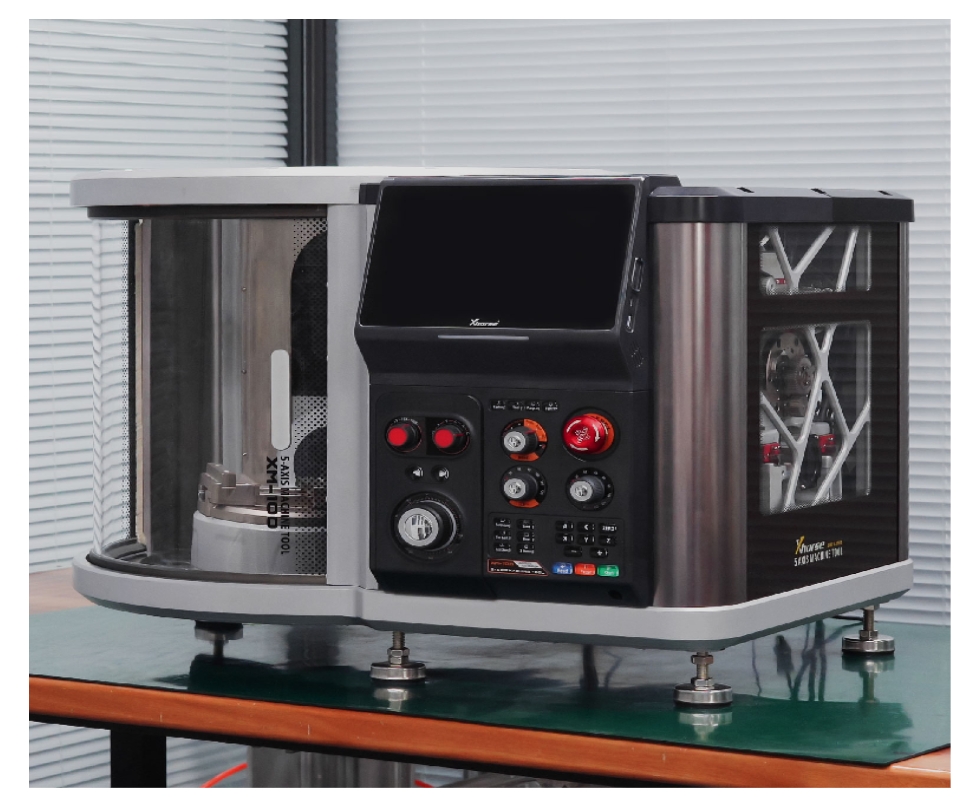You’re in the right place if you’re curious about what a desktop 5-axis CNC machine can do. Imagine being able to machine intricate components with high precision on your desktop. Thus, many agree that these compact yet powerful machines have revolutionized the manufacturing and prototyping industry, allowing designers and engineers to accomplish intricate designs and precise machining right from a desktop. That said, understanding the capabilities of a desktop 5 axis CNC machine can unlock new levels of creativity and precision in your work. Dive into this article to learn about desktop 5-axis CNC machining and discover what makes these machines versatile and valuable.
What Is Desktop 5 Axis CNC?
A desktop 5-axis CNC machine is a compact, versatile tool that simultaneously moves a cutting tool or part along five axes. Traditional 3-axis CNC machines move along three axes (X, Y, and Z), but 5-axis machines add two more rotary axes, allowing for more complex and intricate machining. This increased flexibility enables the creation of more detailed and complex parts, making it ideal for various applications across different industries.
Key Features of Desktop 5-Axis CNC
Check the key features of the desktop 5-axis CNC machine below:
High Precision
Desktop 5-axis CNC machines are known for their high precision and accuracy, often achieving tolerances down to microns. This level of precision is crucial for applications where even the slightest deviation can affect the functionality or aesthetics of the final product.
Multi-Axis Machining
Desktop 5-axis CNC machines excel in their ability to perform multi-axis machining, which involves moving the cutting tool or part along five different axes (X, Y, Z, A, and B) simultaneously. This advanced capability allows for intricate and complex cuts that would be challenging to obtain with traditional 3-axis machines. This capability is especially beneficial in industries that demand precision and complexity. Examples include aerospace for turbine blades and impellers, medical devices with intricate geometries, and the automotive sector for components with complex shapes.
User-Friendly Software
Many desktop 5-axis CNC machines come equipped with intuitive software that simplifies designing and executing complex machining tasks. This software often includes features like CAD/CAM integration, which allows users to design parts in CAD software and then generate the necessary tool paths for machining.
Compact Size
One of the most appealing features of desktop 5-axis CNC machines is their compact size. These machines are designed to fit comfortably on a workbench or desktop, making them ideal for small workshops, home garages, and educational settings. Despite their small footprint, they do not compromise on performance, offering capabilities that rival larger industrial CNC machines. This makes them an excellent choice for small businesses and individuals who need advanced machining capabilities but have limited space.
Versatility
Desktop 5-axis CNC machines work with various materials, including metals like aluminum, steel, titanium, plastics, wood, and composites. This makes them suitable for a broad range of projects. Furthermore, this flexibility works well in rapid prototyping, where manufacturers may need to test different materials before final production. In manufacturing, it allows for the production of custom parts tailored to specific needs.
How Does a Desktop 5-Axis CNC Work?

control panel of a modern 5-axis CNC milling machine
Understanding how a desktop 5-axis CNC machine works involves delving into its core components and the principles behind its operation. These machines combine advanced technology and precise engineering to perform complex machining tasks efficiently.
Basic Components of 5-Axis CNC Machine
Here are the essential components of 5-axis CNC machines:
Controller
The controller acts as the brain of the CNC machine, translating digital design files into precise movements. It interprets G-code, the language used to program CNC machines, which contains instructions for movements, speeds, and tool paths. Modern controllers often have user-friendly interfaces, allowing operators to input commands, adjust settings, and monitor the machining process in real time.
Spindle
The spindle is the rotating component that holds and drives the cutting tool. It can move along multiple axes to perform various cutting operations. The spindle’s speed and power are critical for determining the machine’s capability to handle different materials. High-speed spindles are essential for fine finishes and precise cuts, especially in detailed work involving metals and hard materials.
Axes
A desktop 5-axis CNC machine operates along five axes: X, Y, Z, A, and B. The X, Y, and Z axes represent linear movements along the length, width, and height, respectively. The A and B axes are rotational, allowing the cutting tool or the workpiece to tilt and rotate. The simultaneous movement along these axes enables the machine to reach and machine complex geometries from different angles in a single setup, significantly improving efficiency and reducing the need for multiple fixtures.
Bed/Table
The bed or table of the CNC machine supports the workpiece during machining. Depending on the machine’s design, it can move in different directions to position the workpiece accurately under the cutting tool. The bed’s stability and precision remain crucial for maintaining accuracy during machining.
Tool Changer
Some desktop 5-axis CNC machines come with an automatic tool changer, enabling the machine to switch between different cutting tools as needed without manual intervention. This feature increases efficiency and reduces downtime. Using multiple tools in a single job enhances the machine’s versatility and capability to perform various operations, such as drilling, milling, and finishing.
Operating Principles of Deskop 5-Axis CNC
Here’s a detailed breakdown of how desktop 5-axis CNC machines work:
Design and Programming
The process begins with designing the desired component using CAD (Computer-Aided Design) software. After completing the design, CAM (Computer-Aided Manufacturing) software generates the G-code, which provides the instructions for the CNC machine. The G-code includes details about the tool paths, feed rates, and cutting speeds, ensuring that the machine performs the required operations accurately.
Setup and Calibration
Setting up the machine involves securing the workpiece on the bed and selecting the appropriate cutting tools. Calibration is essential to ensure that the machine’s axes are correctly aligned and that the tools are positioned accurately. Operators may use probes or other measuring devices to verify the setup and make needed adjustments.
Machining Process
Once the setup is complete, the machining process begins. The controller directs the movements of the spindle and the bed, following the programmed tool paths to cut and shape the workpiece. The multi-axis capability allows the machine to approach the workpiece from different angles, performing complex cuts and creating intricate geometries without needing to reposition the workpiece manually.
Monitoring and Adjustments
During machining, operators monitor the process to ensure everything runs smoothly. They may adjust speeds, feeds, or tool positions to maintain quality and prevent errors. Modern machines often include sensors and feedback systems that provide real-time data on cutting conditions, enabling automatic adjustments to optimize performance.
Finishing and Inspection
After machining, fabricators inspect the finished part for accuracy and quality. Operators may perform additional finishing operations, such as polishing or deburring, to achieve the desired surface finish. Inspection tools, such as calipers, micrometers, and coordinate measuring machines (CMMs), are often employed to verify that the part meets the required specifications.
What Can a Desktop 5-Axis CNC Do?
A desktop 5-axis CNC machine offers remarkable versatility and precision in various machining applications. Here are some of the critical capabilities and applications of a desktop 5-axis CNC machine:
Complex Geometry Machining
Desktop 5-axis CNC machines excel in creating intricate designs and complex geometries. Unlike 3-axis machines, which move in three linear directions (X, Y, and Z), 5-axis machines add two rotational axes, allowing for more flexible and comprehensive machining. This capability is crucial for producing parts with undercuts, deep cavities, and intricate curves. For example, turbine blades in aerospace require precision contouring and smooth finishes, achievable with a 5-axis machine’s simultaneous multi-axis movement.
Prototyping
Rapid prototyping is essential for quick design iteration and development. Desktop 5-axis CNC machines can quickly convert digital models into physical prototypes, enabling fast testing and refinement. This is particularly useful in aerospace, automotive, and consumer electronics industries, where the ability to test and refine designs is crucial quickly.
In automotive engineering, for instance, automakers use this tool to create and test new engine components efficiently, allowing them to make swift adjustments based on performance feedback. The machine’s ability to work with various materials, including metals, plastics, and composites, further enhances its utility in prototyping.
Production of End-Use Parts
Desktop 5-axis CNC machines can produce high-quality end-use parts. The precision and repeatability of these machines ensure that each part meets stringent quality standards. For instance, custom surgical instruments and implants require exact dimensions and smooth finishes to ensure proper functionality and patient safety. The ability to produce such components in small batches on demand reduces lead times and inventory costs.
Mold and Die Making
Creating molds and dies requires high precision and the ability to machine complex shapes. Desktop 5-axis CNC machines are ideal for this purpose, providing the accuracy and flexibility needed to produce high-quality molds and dies used in plastic injection molding, metal casting, and other manufacturing processes.
Conclusion
A desktop 5-axis CNC machine stands out as a remarkable tool for machining. It offers unparalleled precision, versatility, and efficiency, making it ideal for creating complex parts, rapid prototyping, and high-quality production. Whether you’re involved in aerospace, automotive, medical, or general manufacturing, this machine can significantly enhance your capabilities and broaden your project possibilities. By fully understanding and utilizing the features of a desktop 5-axis CNC, you can achieve innovative designs and exceptional quality in your work, making it a crucial addition to any machining setup.
At Zintilon, we harness the capabilities of advanced CNC 5 axis machining to bring your projects to life with exceptional precision. Reach out today to see how our cutting-edge technology can transform your designs and optimize your production.







